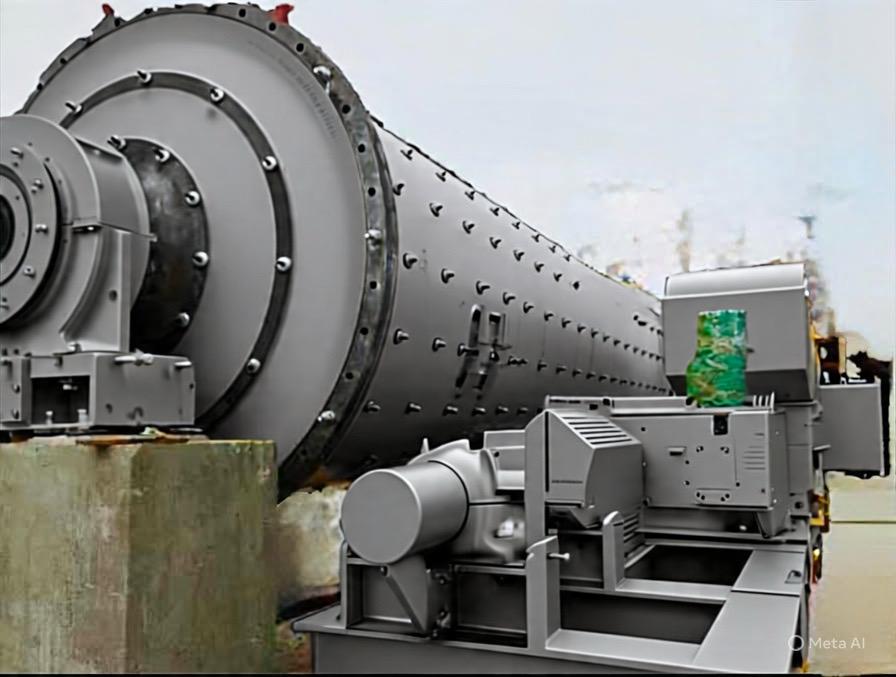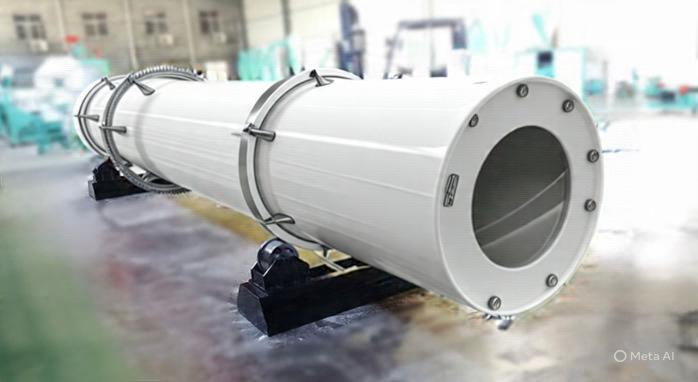General Background
Fertilizer is a material that is added to the soil to supply one or more elements required for plant growth and productiveness. The major three elements are nitrogen, potassium and phosphorus), the secondary elements are calcium, sulfur, magnesium, and other elements are boron, manganese, iron, zinc, copper and molybdenum. Fertilizers enhance the natural fertility of the soil or replace the chemical elements taken from the soil by harvesting, grazing, leaching or erosion. Organic fertilizers include properly managed barnyard manure, compost and green manure. Manure contains nitrogen and phosphate content. It is sometimes modified with superphosphate to make it a better-balanced fertilizer. Compost, decayed to a relatively stable, amorphous state, is made from plant materials mixed with manure and some soil. Green manure is a herbaceous plant material plowed into the soil that has not undergone decay. Artificial fertilizers are inorganic fertilizers formulated in appropriate concentrations and combinations supply three main nutrients: nitrogen, phosphorus and potassium (N, P and K) for various crops and growing conditions. N (nitrogen) promotes leaf growth and forms proteins and chlorophyll. P (phosphorus) contributes to root, flower and fruit development. K (potassium) contributes to stem and root growth and the synthesis of proteins. The common inorganic fertilizers include ammonia (82% nitrogen), NPK combinations, urea (46% nitrogen), superphosphate, mono and dibasic ammonium phosphates (containing nitrogen and phosphate), calcium ammonium nitrate, potassium chloride (muriate of potash).
NPK Fertilizer production processes
The various steps involved in the manufacture of finished fertilizer products, from raw materials through intermediate products. Fertilizers are produced as straight or multi-nutrient products, as described in the following sections.
Nitrogen Fertilizers
The intermediate product in the case of nitrogen (N) fertilizers is ammonia (NH3), which is produced by combining nitrogen extracted from the air with hydrogen from hydrocarbons such as natural gas, naphtha or other (heavier) oil fractions, and hydrogen which is obtained by means of the Steam Reforming Process. Approximately 85% of the anhydrous ammonia plants in the EU use natural gas. Measures to improve production processes have focused on reducing the amount of hydrocarbon feedstock required to produce a tonne of ammonia.
The further processing of ammonia produces straight N fertilizers such as urea, ammonium nitrate and calcium ammonium nitrate, as well as solutions of the above fertilizers and ammonium sulphate. Ammonia is also the main component of many multi-nutrient fertilizers.
Phosphate Fertilizers
Rock phosphate (27 – 38% P2O5) is the raw material source from which all types of phosphate fertilizers are produced, with the minor exception of basic slag (12 – 18% P2O5), which is a by-product of steel production.
In its unprocessed state, rock phosphate is not suitable for direct application, since the phosphorus (P) it contains is insoluble. To transform the phosphorus into a plant-available form and to obtain a more concentrated product, phosphate rock is processed using sulphuric acid, phosphoric acid and/or nitric acid. Acidulation by means of sulphuric acid produces either phosphoric acid, an intermediate product in the production of triple superphosphate (TSP), MAP, DAP and complex fertilizers, or single superphosphate (SSP). Acidulation using phosphoric acid produces TSP, and acidulation using nitric acid produces NP slurries for use in the manufacture of complex fertilizers.
Potash Fertilizers
Most potassium (K) is recovered from underground deposits of soluble minerals, in combination with either the chloride or sulphate ion. Although the low-grade, unrefined material can be applied direct, the minerals are normally purified, to remove sodium chloride, and concentrated before use. The resulting potash fertilizers are applied as straight K fertilizers such as potassium chloride and potassium magnesium sulphate or are used in the manufacture of multi-nutrient fertilizers.
Multi-nutrient Fertilizers
Most multi-nutrient fertilizers produced in the EU are either complex fertilizers, each granule of which contains a uniform ratio of nutrients, or blends. Typically, complex NPK fertilizers are manufactured by producing slurries of ammonium phosphates, to which potassium salts are added prior to granulation or prilling. PK fertilizers, on the other hand, are generally produced as compounds by the steam granulation of superphosphates (SSP or TSP) with potassium salts.
About blending:
Blending is a mechanical process of mixing different but compatible products. In this specific project the process concerns the blending of granular fertilizers.
A good quality blended fertilizer means homogenous raw material (granules), absence of dust and lumps, and a thorough mixing.
Blended fertilizers cannot be stored or transported in bulk because of a serious segregation phenomenon which could downgrade the mixture homogeneity. That means the blended product must be bagged immediately after mixing, avoiding any useless movement.
Following steps involved in the process-
- Raw Material Trucks will be unloaded at one place & RM will be transfer to storage yard by conveying system.
- A hopper that will receive the raw material fed by a pay loader.
- A screen for the elimination of the fine and coarse (optionally) material. As an alternative solution the screening could be performed after blending.
- A belt tripper for feeding the screened product to the hoppers (the 6 big hoppers).
- Six big hoppers for main raw materials, one hopper for trace elements.
- Dosing systems for every hopper.
- Dust trap system
- Liquid adding unity
- Micronutrient adding unit.
- Coating unit.
- A blender or equivalent equipment for batch or continuous mixing process.
- A conveying system to transport the blended product.
- A hopper for the temporary storage of the final product, before bagging.
- A scale for the filling of bags.
- A telescopic band to load the final bagged product to the trucks.
The continuous mixing process is also an automatic system. The raw materials are stored in hoppers and their dosing is continuously controlled by an automation system. Choosing an appropriate system between the above processes must based on some principles and policies which define the following issues:
- The quality standards.
- The local environmental and occupational safety standards.
- The investment cost.
- The local personnel qualifications.
- The local maintenance possibilities.
- The bulk raw material vessel unloading rate and land transport capabilities.
- The peak period intensive sales.
- PROCESS BLOCK FLOW DIAGRAM

RM & UTILITY SPECIFICATION
Following are the Raw Material Specifications:
| BLEND INGREDIENT | N | P2O5 | K2O | Ca | Mg | S | Zn | B | Cu | Cl |
| – – – – – – – – – – – – – – – – Typical analysis, % – – – – – – – – – – – – – – – – – – | ||||||||||
| Ammonium nitrate | 34 | |||||||||
| Urea | 46 | |||||||||
| Calcium Ammonium nitrate (CAN) | 26-28 | 6-10 | 0-3 | |||||||
| Yara Amidas | 40 | 5.6 | ||||||||
| Ammonium Sulfate | 21 | 24 | ||||||||
| Diammonium Phosphate (DAP) | 18 | 46 | ||||||||
| Monoammonium Phosphate (MAP) | 11 | 52 | ||||||||
| Phosphate Rock (PR) | 27-29 | 25-28 | ||||||||
| Triple Superphosphate (TSP) | 45-46 | 15 | 2-3 | |||||||
| Single Superphosphate (SSP) | 16-20 | 18-21 | 7-9 | |||||||
| Muriate of Potash (also KCl, MOP) | 60 | 45 | ||||||||
| Sulfate of Potash (SOP) | 50 | 18 | ||||||||
| Elemental Sulfur | 80-100 | |||||||||
| Polyhalite (Polysulfate®, POLY4) | 14 | 12.1 | 3.6 | 19.2 | ||||||
| 19-38-0+7S | 19 | 38 | 7 | |||||||
| Gypsum (calcium sulfate dihydrate) | 23 | 18.6 | ||||||||
| Magnesium Sulfate monohydrate (kieserite) | 15 | 19.8 | ||||||||
| Zinc Sulfate Monohydrate | 17 | 35 | ||||||||
| Zinc Sulfate Heptahydrate | 10 | 21 | ||||||||
| Zinc oxide | 70-80 | |||||||||
| Borax Decahydrate | 10 | |||||||||
| Borax Pentahydrate | 14.5 | |||||||||
| Disodium Octaborate Pentahydrate | 20.9 | |||||||||
| Boric Acid | 17.5 | |||||||||
| Copper Sulfate Pentahydrate | 12 | 25 | ||||||||
| Cupric Oxide | 60-80 | |||||||||
| Cuprous Oxide | 75-89 | |||||||||
| Calcitic Limestone | 35-40 | |||||||||
| Dolomitic Limestone | 20-25 | 15-25 | ||||||||
| Various “fine” limes | 20-40 | 0-20 | ||||||||
Note- Raw material consumption as per required grades & Finished product may vary based on actual RM specifications. The Figures indicated above can undergo change during Detail Engineering.
Process Blending plant






